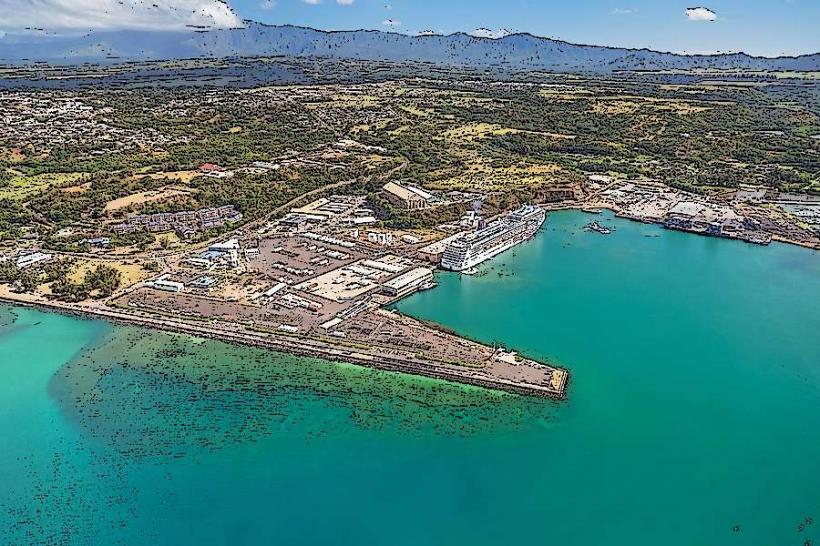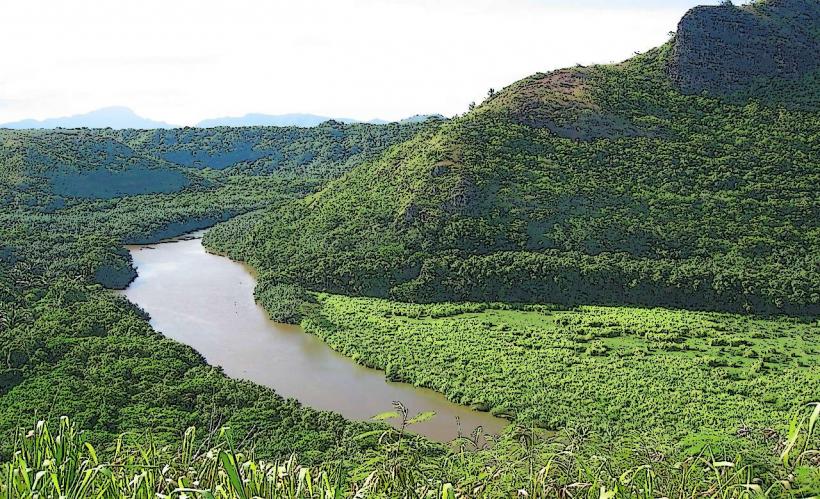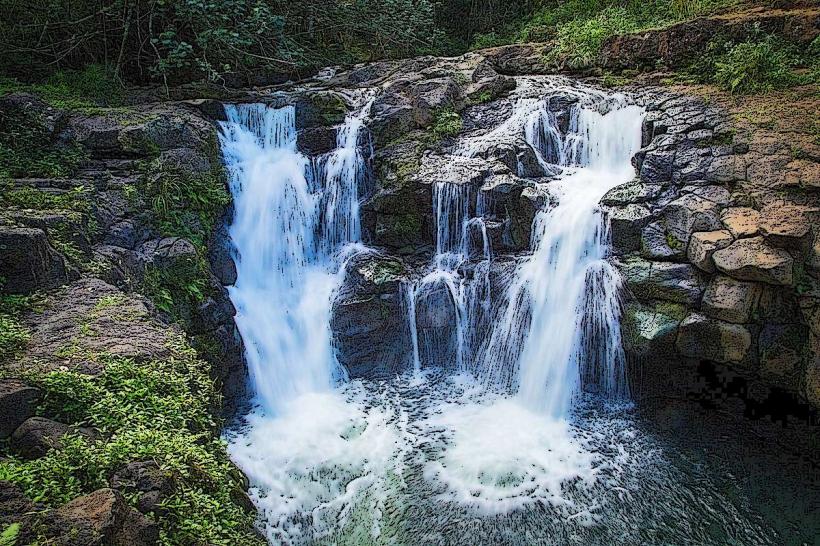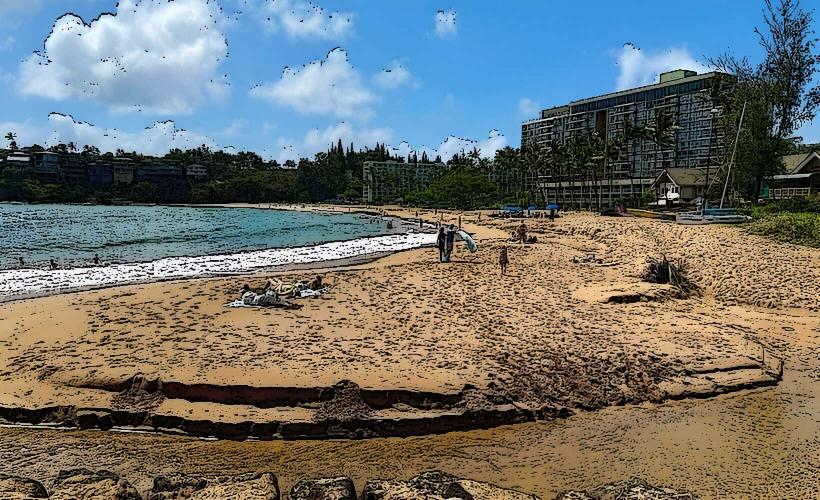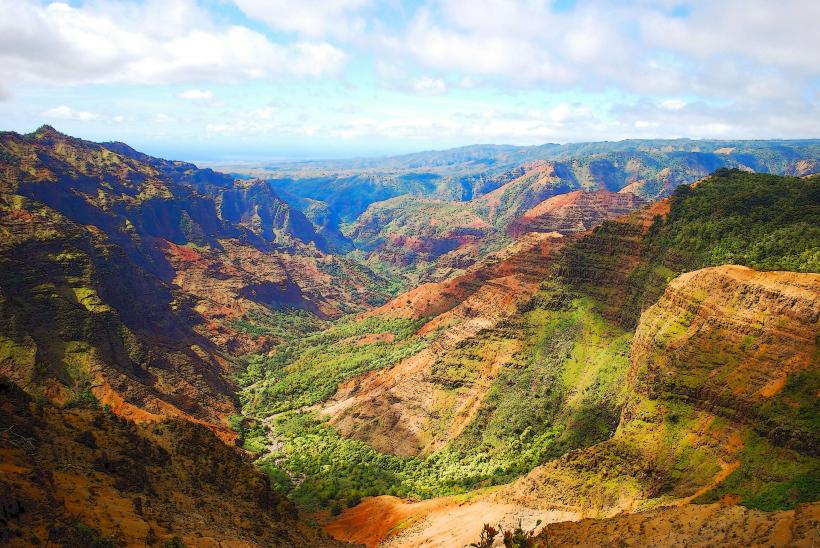Information
Landmark: Huleia National Wildlife RefugeCity: Lihue
Country: USA Hawaii
Continent: North America
Huleia National Wildlife Refuge is a serene and ecologically significant wildlife sanctuary located on the island of Kauai, Hawaii. Established in 1976, the refuge is situated on the island's eastern shore, near the town of Lihue, and spans over 250 acres of diverse habitats, including wetlands, streams, and lush forests. The refuge serves as an important sanctuary for migratory waterfowl, native birds, and other wildlife, making it a key conservation area on the island.
Key Features and Attractions:
1. Ecological Significance:
- Huleia National Wildlife Refuge is vital for the protection of native Hawaiian species, particularly those found in the wetlands and freshwater habitats. The refuge includes both tidal and freshwater wetlands, which provide essential feeding and nesting grounds for various species of waterfowl and migratory birds.
- The area is home to a variety of endemic Hawaiian wildlife, including the Hawaiian coot (also known as the Alae ke'oke'o), the Hawaiian duck (or Koloa maoli), and the black-crowned night heron. The refuge is an important stopover for migratory bird species traveling along the Pacific Flyway, making it an ideal location for birdwatching and nature observation.
2. Birdwatching and Wildlife Viewing:
- Huleia Refuge is particularly popular among birdwatchers due to the variety of bird species that inhabit or visit the area. The refuge provides a peaceful, natural environment for birds to nest and forage, and visitors can observe them in their natural habitat.
- In addition to waterfowl, the refuge is home to other native Hawaiian species, including the Hawaiian stilt (or A’o), the Hawaiian gallinule (or Alae'ula), and the nene (Hawaii’s state bird). Visitors may also see native plants such as kalo (taro) and wiliwili trees that thrive in the wetlands.
- The Huleia River, which flows through the refuge, is another prime location for spotting native fish species, such as the o'opu (Hawaiian stream fish), as well as various insects and amphibians.
3. Habitat Diversity:
- The refuge contains a variety of habitats that support different ecosystems, including freshwater ponds, marshes, and the surrounding tropical forests. This ecological diversity is crucial for the survival of the various species that inhabit the refuge and provides a rich environment for learning about native Hawaiian ecosystems.
- Visitors can explore the wetlands, which are home to dense vegetation and shallow waters that provide shelter and food for a variety of bird species. The riparian zone along the Huleia River offers a lush backdrop, with trees and shrubs that provide cover for smaller animals and birds.
4. Huleia River and Its Importance:
- The Huleia River plays a central role in the ecosystem of the refuge. The river provides the freshwater that sustains the wetlands, making it a crucial water source for wildlife in the area. The river also supports a unique mix of plant and animal life that depend on the freshwater flow.
- Boating and canoeing are not permitted in the river or refuge to protect the delicate ecosystems. However, visitors can enjoy the river from the nearby viewing areas and trails, which offer scenic vistas of the river as it meanders through the refuge.
5. Limited Public Access:
- Access to Huleia National Wildlife Refuge is limited and primarily restricted to permit-based activities, such as guided tours and educational programs organized by the U.S. Fish and Wildlife Service. This ensures that visitors do not disturb the delicate habitat and wildlife, particularly during nesting seasons.
- The refuge is generally not open for casual public visitation, so individuals interested in visiting should check with the U.S. Fish and Wildlife Service for specific program schedules and tours. The tours are typically led by experienced naturalists who can provide insight into the ecology and history of the area.
- Fishing is permitted in the refuge under certain conditions, as long as it is done responsibly and in accordance with local regulations.
6. Cultural and Historical Importance:
- Huleia National Wildlife Refuge is also rich in Hawaiian cultural history. The area was once used for traditional Hawaiian farming, particularly for cultivating taro (kalo) in the wetlands. The remains of old taro patches and fishponds can still be seen around the refuge, offering a glimpse into the island’s agricultural past.
- The refuge is situated on land that was once part of the Hawaiian royal estate, and it is believed that the area was used by Hawaiian royalty for leisure and to enjoy the natural beauty of the land.
- Native Hawaiians traditionally relied on the wetlands and river systems for fishing and farming, and many of the native species found in the refuge have cultural significance.
7. Hiking and Nature Walks:
- There are limited walking trails in the refuge, but they are not open for general public access. However, visitors can participate in guided hikes and nature walks led by naturalists or local guides who provide information on the wildlife, plants, and history of the refuge.
- The hiking trails are often used by conservationists and researchers monitoring the ecosystem, and they help preserve the habitat while educating the public about the importance of conservation efforts.
8. Nearby Attractions:
- Wailua River State Park: Nearby, Wailua River offers opportunities for boating, hiking, and exploring ancient Hawaiian cultural sites.
- Opaekaa Falls: Just a short drive away, this scenic waterfall is one of Kauai’s most easily accessible and popular natural attractions.
- Wailua Beach Park: Located near the Huleia Refuge, this park offers another chance to enjoy the natural beauty of the region with its picturesque beach and coastal views.
- Kauai Museum: Located in Lihue, this museum offers more information about Kauai’s history, culture, and natural environment.
9. Conservation and Education:
- The U.S. Fish and Wildlife Service runs a number of conservation programs to protect the native species and habitats of the Huleia National Wildlife Refuge. Efforts include controlling invasive species, restoring native plant life, and maintaining water quality in the refuge’s wetlands.
- Educational programs at the refuge help raise awareness about the importance of protecting Hawaii’s delicate ecosystems and wildlife. Visitors who participate in tours and programs will learn about the environmental challenges faced by the island and the efforts being made to preserve its natural beauty.
Conclusion:
Huleia National Wildlife Refuge is a peaceful and ecologically rich area that provides critical habitat for Kauai's native species. While access is limited, the refuge plays an important role in conservation and offers a unique opportunity for those interested in learning about Hawaii’s diverse ecosystems and wildlife. The refuge’s serene atmosphere, combined with its rich history and educational opportunities, makes it an invaluable part of Kauai's natural heritage.

